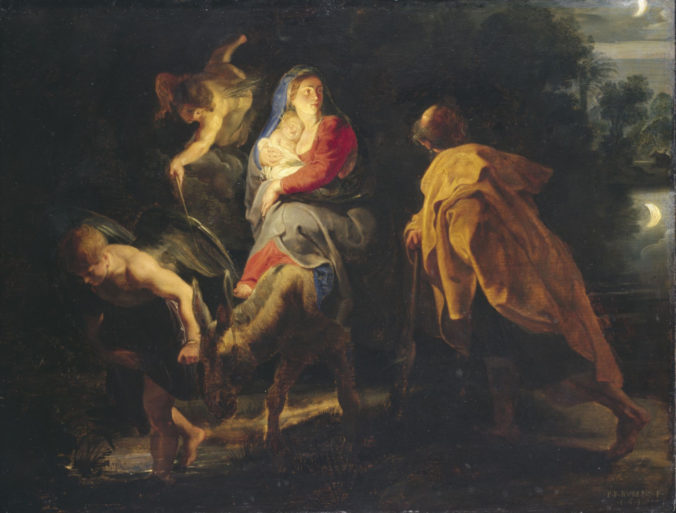Although these Old Testament texts can give great insight into the atonement, the New Testament must also be examined to give complete clarity on whether Jesus died for the entire human race or merely for the elect. In “The Work of Christ,” Robert Letham powerfully demonstrates that Jesus didn’t merely suffer on the cross, He suffered for sin on the cross, as God, “Made made him to be sin who knew no sin… ” (2 Corinthians 5:21 ESV).… Read more
Category: Theology (Page 1 of 2)
Isaiah’s prophecy about the coming Savior gives us further details on the nature of Christ’s atonement. From this, we can draw implications for whom His atonement was made. In his essay “Stricken for the Transgression of My People,” J. Alec Motyer expounds on the various requirements for a proper penal substitute. His more literal translation of Isaiah 53:5 reads, “He was wounded because of our transgressions, crushed because of our iniquities.” Further, he renders 53:8, “He was cut down from the land of the living because of the rebellion of my people to whom the blow belonged.”… Read more
In pondering the nature of Christ’s death on the cross as an atoning sacrifice for sinners, the necessary question that must be drawn from this is, “For whom did Christ make atonement?” In John’s First Epistle, we read, “He is the propitiation for our sins, and not for ours only but also for the sins of the whole world” (1 John 2:2 ESV). Initially, it might seem that this verse would answer this question without the need for further debate – that Christ died for the sins of every person who ever lived.… Read more
Covenant Signs
With this knowledge of the level of covenant discontinuity, the covenant signs, circumcision and baptism, can be compared. Steven Wellum further discusses that under the Abrahamic covenant, circumcision “marked out a national entity. … God chose one man and his seed to grow into a nation to prepare the way for the coming of Christ. Circumcision…served as a physical sign to mark out a nation and to distinguish [Israel] as his people.” Although this signified their national heritage as God’s people regardless of the faithfulness of individual members, circumcision also showed the need for the Israelites’ hearts to be circumcised.… Read more
Note to the reader: This article is unusually long given the complexity of the topic. I’ve made every effort to balance conciseness and thoroughness. Although longer than the articles that you are accustomed to reading, I appreciate the reader’s patience and time investment in wrestling with this important issue.
Introduction
“The gift of singleness.” The mere mention of it quickly leads to quips from single twenty (or thirty)-somethings of it being “the gift that nobody wants.”… Read more
When observing the New Covenant in light of the Old, Paul Jewett explains, “stress should…be laid on its unity. The covenant idea is a fundamental concept of redemptive revelation: it unites the entire purpose of God throughout salvation history.” Despite this, there is still a level of discontinuity between the physical seed, Israel, and the spiritual seed, the church. The physical seed had a mixture of faithful and unfaithful participants, but in the case of the spiritual seed, all participants confess Christ.… Read more
Introduction
Although there is much unity among Reformed Baptists and Presbyterians on the fundamental issues of the Christian faith, one of the most enduring debates that continues is the issue of baptism. Who should be baptized? Is baptism for believers and their children, or is it only for believers upon a profession of faith in Christ? The answer to this question rests on how we understand the Old and New Covenants, and their corresponding signs, circumcision and baptism.… Read more
In Matthew’s account of Christ’s birth, there is one verse whose implications may be easily glossed over. In the second chapter, we read of how the Lord warned Joseph to flee to Egypt, as Herod desired to kill Jesus, fearing his future kingly reign. Upon Herod’s death, they are then able to return where we read, “This was to fulfill what the Lord had spoken by the prophet, ‘Out of Egypt I called my son.'” (v.… Read more
In this final article in our series, we will briefly examine various disputed and apocryphal books that arose in early Christianity. Some were books that did not receive immediate acceptance but are now in our New Testament. Others are orthodox writings that were rejected as Scripture, while others were heretical works written by fringe sects.
Canonical Books
Although such a fact may be surprising for some Christians, the following New Testament books did not receive the widespread acceptance that they now receive today for a variety of reasons including questions of authorship and dating.… Read more
In this penultimate article, we will explore the final quality of canonicity, which is corporate reception. This states that Christians will hear the voice of God speaking through his Word and will receive it as such. Thus, Christians will know what is God’s Word and what is not. As Jesus said, “My sheep hear my voice, and I know them, and they follow me” (John 10:27).
Despite the truth of corporate reception, we must make a few qualifications.… Read more





